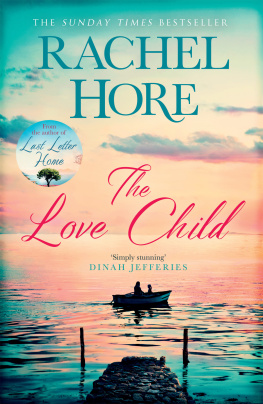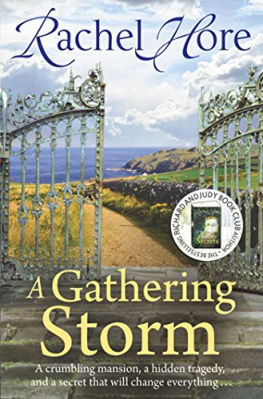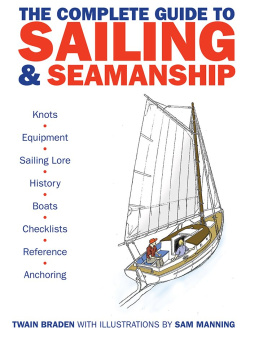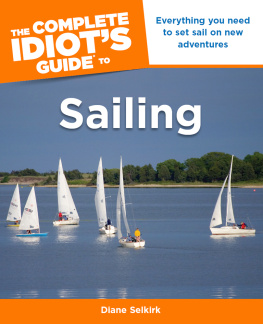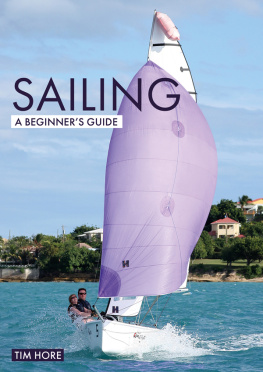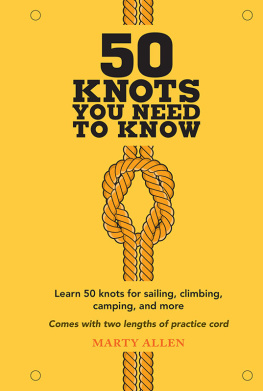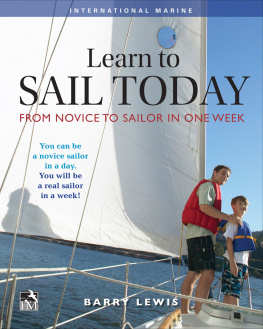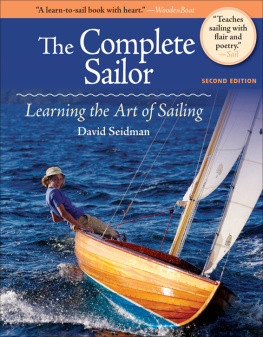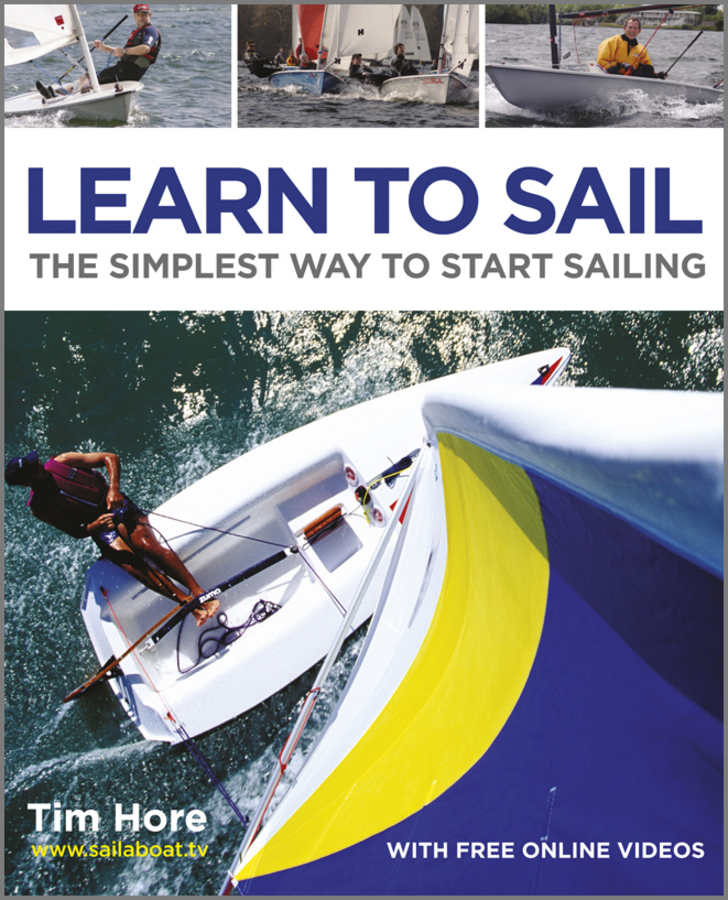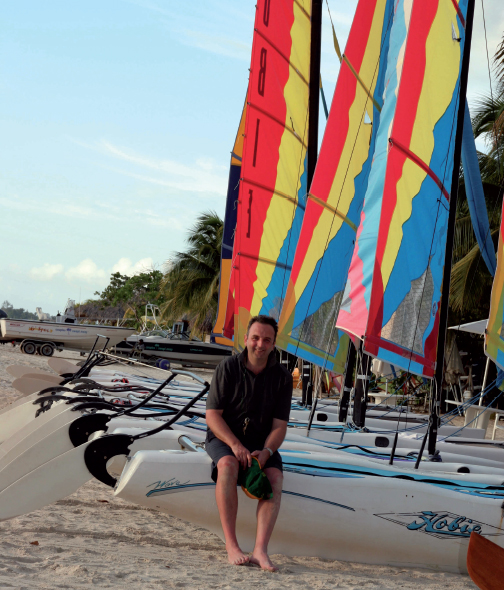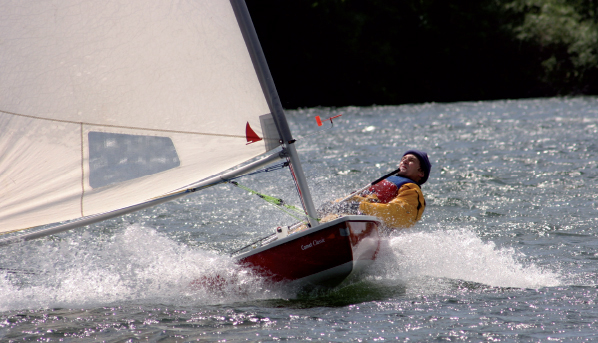Contents
This book has been created using content from our website www.sailaboat.tv and is a collaborative effort of lots of people. I would like to thank the partners of Sailaboat Penny King and Nigel Palmer for their drive and vision to get the project off the ground in the first place.
Thanks also to my wife Fay for her enthusiasm and encouragement for all the times I was busy writing, filming and editing.
For the images in the book, thanks go to Tash Jones of Tympani Productions and Simon Vacher for his graphic design.
Thanks also to Evette Tyler Hore for some of the still images.
Thanks to the Laser Centre in Portland for hosting us for the filming period and in particular Hannah Burywood and Pete Ollerenshaw for being such good sports and putting up with days of filming for the video, it is them who you see in most of the pictures.
Thanks also to Littleton Sailing Club who accommodated us for some of the filming and to Laura Glover and Phil Lewis who also appear mainly in the spinnaker chapter.
Also thanks to the club members at Littleton and at Stokes Bay for being photographed.
Thanks to the team at Wiley for their input and also to Maggie Aldred for the layout.
I would finally like to thank my parents Liz and John for introducing me to the wonderful sport of sailing all those years ago and for encouraging me as a photographer.
Above all thanks to you for buying the book and I really hope that it helps you to learn how to sail

This edition first published 2012
2012 Tim Hore
All pictures used in this book have been taken by, and belong to, Tim Hore
Registered office
John Wiley & Sons Ltd, The Atrium, Southern Gate, Chichester, West Sussex, PO19 8SQ, United Kingdom
Editorial office
John Wiley & Sons Ltd, The Atrium, Southern Gate, Chichester, West Sussex, PO19 8SQ, United Kingdom
For details of our global editorial offices, for customer services and for information about how to apply for permission to reuse the copyright material in this book please see our website at www.wiley.com .
The right of the author to be identified as the author of this work has been asserted in accordance with the UK Copyright, Designs and Patents Act 1988.
All rights reserved. No part of this publication may be reproduced, stored in a retrieval system, or transmitted, in any form or by any means, electronic, mechanical, photocopying, recording or otherwise, except as permitted by the UK Copyright, Designs and Patents Act 1988, without the prior permission of the publisher.
Wiley publishes in a variety of print and electronic formats and by print-on-demand. Some material included with standard print versions of this book may not be included in e-books or in print-on-demand. If this book refers to media such as a CD or DVD that is not included in the version you purchased, you may download this material at http://booksupport.wiley.com . For more information about Wiley products, visit www.wiley.com .
Designations used by companies to distinguish their products are often claimed as trademarks. All brand names and product names used in this book are trade names, service marks, trademarks or registered trademarks of their respective owners. The publisher is not associated with any product or vendor mentioned in this book. This publication is designed to provide accurate and authoritative information in regard to the subject matter covered. It is sold on the understanding that the publisher is not engaged in rendering professional services. If professional advice or other expert assistance is required, the services of a competent professional should be sought.
Library of Congress Cataloging-in-Publication Data
Hore, Tim.
Learn to sail: the simpliest way to start sailing / Tim Hore.
p. cm.
ISBN 978-1-119-95276-3 (pbk.); ISBN: 978-1-119-95491-0 (ebk)
ISBN: 978-1-119-95493-4 (ebk) ISBN: 978-1-119-95492-7 (ebk)
1. SailingHandbooks, manuals, etc. 2. SailboatsHandbooks, manuals, etc. I. Title.
GV811.H624 2012
797.124dc23
2011049850
A catalogue record for this book is available from the British Library.

Wiley Nautical sharing your passion.
At Wiley Nautical were passionate about anything that happens in, on or around the water.
Wiley Nautical used to be called Fernhurst Books and was founded by a national and European sailing champion. Our authors are the leading names in their fields with Olympic gold medals around their necks and thousands of sea miles in their wake. Wiley Nautical is still run by people with a love of sailing,
Introduction
Dinghy sailing is the most popular and best way to learn how to sail. It teaches you skills that can then be applied to yacht sailing, windsurfing or even kite surfing. With so many designs available, there is a dinghy to suit everyones needs, from stable boats for beginners to high performance machines for serious racers.
Sailing is a fantastic sport. Understanding where the wind is blowing from and realising how to harness this power is all absorbing and totally exhilarating. I have been a keen sailor since the age of 14, sailing dinghies, windsurfers and offshore yachts. I am a qualified RYA Senior Dinghy Instructor and regularly teach people of all ages to sail. My approach is always to help them enjoy the sport of sailing and my passion is for them to have fun.
Learn to Sail is the perfect partner either for anyone new to dinghy sailing or for those looking to refresh their sailing techniques. Step-by-step instructions explain the basic skills of sailing a single- or two-person dinghy. Youll be guided through each stage of the learning process, starting with what you need to know prior to setting out on the water and how to stay safe on the water.
Many of the photographs are taken from remote onboard cameras, including one at the top of the mast, to provide unique and highly instructive images. You can also go online to watch free video demonstrations showing you how to put the theory into practice view them at www.wileynautical.com/learntosail . You can purchase full length instructional videos at www.sailaboat.tv
I hope you enjoy reading the book and, better still, become a keen sailor.

Sailing is a wonderful sport and open to all. For the purposes of this book we have had to use the terms helmsman and he throughout, but when reading this please interpret this as meaning either male or female.
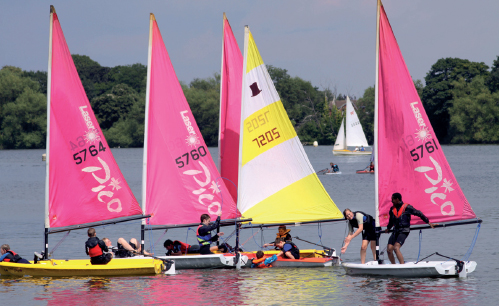
KNOW YOUR BOAT
In this chapter you will learn the terminology used in sailing, as well as the names for the parts of your boat, sails and rigging
The Basics
Looking at a plan view of the hull, the left-hand side of the boat is called the port side and the right-hand side the starboard side. The front of the boat is called the bow and the rear is the stern or transom. Anything that happens ahead of the direction of travel is called ahead, and behind the boat is called astern. The wind will push the boom to one side of the boat or the other the side of the boat under the boom is called the leeward side, while the side of the boat opposite the boom is called the windward side. The leeward and windward sides of the boat will change, depending on the wind direction in relation to the boats course (see the points of sailing chapter on ), but all the other descriptions mentioned above will always remain the same.


